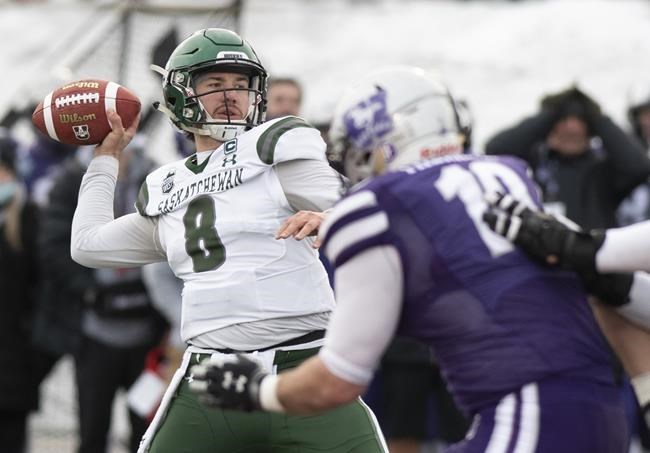Football Canada president Jim Mullin is "cautiously optimistic" the amateur game in Canada has weathered the COVID-19 storm.
The global pandemic shut down much of the sport in this country the last two years, especially tackle football. But with the easing of restrictions across Canada, the game is poised to return to the field in 2022.
The CFL didn't play in 2020 due to COVID-19. It resumed action last year with no exhibition contests and a 14-game regular season but is planning a full return (training camp, two pre-season games, 18-game schedule) in 2022.
Buoying Mullin's optimism is data that shows amateur registration/participation figures reaching or exceeding pre-pandemic levels.
"I think cautiously optimistic is the best way to put it because there's still a lot of work ahead," Mullin said. "The state of sport in Canada, especially when it comes to team sports, for the most part we're all feeling a decrease in that activity in organized sport and we (football) are not unique.
"But because football on the tackle side takes so many resources, players and coaches, if you don't have that critical mass it's hard to start an organization. It's not like other sports with a smaller bench. You need a big bench, it's a big game and there's always challenges when you're working with numbers like that."
According to Football Canada data, under-18 participation in 2021-22 will be 98,743 and is projected to increase to 108,254 in 2022-23. That figure was 104,309 in 2018-19 before dipping to 57,286 in 2020-21.
The 2021-22 high-performance figure is 4,733 — up from 4,634 the previous year — and is expected to rise to 5,185 in 2022-23. The 2018-19 total was 4,523.
Increases are also projected for both USports (2,879 in 2021-22 to 2,900 in 2022-23) and the Canadian Junior Football League (1,351 in 2021-22 to 1,700 in 2022-23). The CJFL added expansion franchises in Belleville, Ont., and Prince George, B.C., in 2020 and '21, respectively.
The data also shows 250 Canadians currently playing in the U.S., at the NCAA, NAIA, junior college or academy levels. That figure is projected to rise to 300 in 2022-23.
The data comes at a time when the CFL and CFL Players' Association are negotiating a new collective bargaining agreement. The steady increase of youngsters playing the game in Canada should be good news for CFL coaches and GMs, some of whom feel there's not enough quality Canadians to go around in the nine-team circuit.
In the last CBA, CFL game-day rosters consisted of 46 players, of which at least 21 had to be Canadian. And teams were required to field a minimum of seven Canadian starters.
"Through COVID we've had the opportunity to revisit some of our approaches to the sport," Mullin said. "We want to have a focus now on getting kids involved in the game at a younger age and that means getting them involved in flag football.
"We've noticed in some regions of the country there's a real demand for flag football … that in some instances registrations have outpaced the capacity of these organizations to bring kids in at that level."
While being pleased with the CJFL figures, Mullin said the challenge now is ensuring there's a steady influx of young players who eventually could graduate to the junior ranks.
"We just need to make sure at the grassroots level there are players coming up to fill into that high-performance level," he said.
But for small organizations and communities, getting enough younger players for tackle football has always been a challenge. Some, though, have thought outside the box and created six- and nine-man programs, which Mullin applauds.
"That was a cultural barrier within the sport that we had to work to break down and I believe COVID, like it has with so many other things in society, advanced that narrative," Mullin said. "I think six- and nine-man football, especially for smaller communities and urban communities, are the future of the game in terms of rebuilding the foundation that we need.
"As much as we're maintaining our numbers from 2016, we're a little off from where the apex was around 2007-09. There was a downward trend, the one thing that we've been able to continue to review and examine while we were not playing or playing at half of capacity through the pandemic was safety regulations. All of those safety concerns that existed before the pandemic haven't gone away … but the six- and nine-man games, especially played on a Canadian field, are more safe games but can also teach contact."
This report by The Canadian Press was first published April 28, 2022.
Dan Ralph, The Canadian Press




